Moultrie game cameras are renowned for their reliability and advanced features, offering motion detection, night vision, and durable designs. Ideal for wildlife monitoring, they cater to hunters and enthusiasts, providing high-quality images and user-friendly operation.
Overview of Moultrie Game Camera Models
Moultrie offers a diverse range of game camera models, catering to different needs and preferences. From the TRACE Cameras, designed for security and wildlife monitoring, to the Delta Base Cellular Trail Camera, which provides remote monitoring capabilities, each model is engineered for performance. The Micro Series is known for its compact design, while the A-Series offers intuitive controls. Innovations like the Field & Stream-endorsed models highlight Moultrie’s commitment to quality and innovation. Whether for hunting or property surveillance, Moultrie’s lineup ensures there’s a camera to suit every user’s requirements, making them a trusted choice in the market.
Importance of Following the Instruction Manual
Adhering to the instruction manual is crucial for optimal performance and longevity of your Moultrie game camera. Proper setup, such as registering your camera for warranty activation, ensures coverage and support. The manual provides essential steps like installing batteries correctly and activating diagnostic tests to verify functionality. By following guidelines, users can avoid common issues like false triggers and ensure accurate motion detection. The manual also offers tips for mounting the camera at the recommended height and positioning it correctly, enhancing image quality and effectiveness in the field.

Unboxing and Preparing Your Moultrie Game Camera
Unboxing your Moultrie game camera reveals the device, batteries, SD card, mounting straps, and manual. Initial setup includes installing batteries, inserting the SD card, and powering on.
Components Included in the Package
Your Moultrie game camera package typically includes the camera unit, a detailed instruction manual, mounting straps, and sometimes a USB cable. The manual provides step-by-step setup guidance, while the mounting straps help secure the camera in the field. Additional components like batteries and an SD card are often required but may not be included. Ensure all items are accounted for before initial setup to guarantee proper functionality and avoid delays. The manual is essential for understanding camera operations, so keep it handy for reference during the preparation process.
Registering Your Camera for Warranty
Registering your Moultrie game camera is crucial to activate the warranty. Visit moultriemobile.com/warranty or moultriefeeders.com/warranty and follow the prompts. You’ll need your camera’s model and serial number, typically found on the device or packaging. Provide your contact information and purchase details to complete the process. Activation ensures coverage under Moultrie’s warranty policy, offering protection and support for your camera. Keep your registration confirmation for future reference to ensure seamless warranty services.
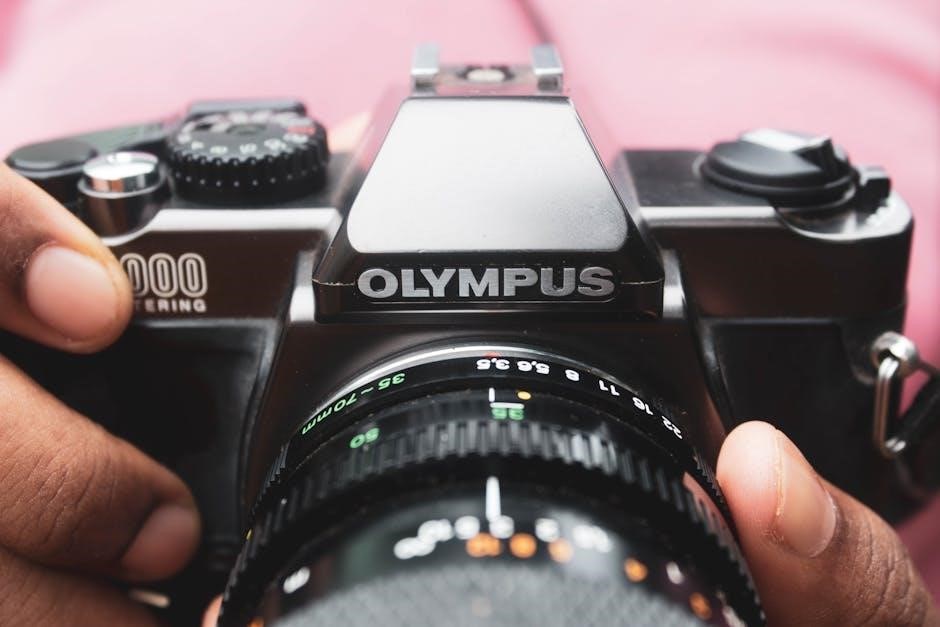
Mounting and Installing the Camera
Mount the camera 3 feet high, facing north or south to avoid direct sunlight. Use the provided strap or bracket for secure installation, ensuring stability in the field.
Recommended Height and Positioning
Mount the camera 3 feet above ground for optimal motion detection and image capture. Position it facing north or south to minimize direct sunlight interference. Ensure the camera is tilted slightly downward to focus on the target area. Clear any brush or obstacles within 10 feet to avoid false triggers. Secure the device using a strap or bracket for stability. Proper placement enhances detection range and ensures clear visuals, making it ideal for monitoring wildlife activity effectively.
Securing the Camera in the Field
Use the provided tree strap or a compatible bracket to secure the camera firmly to a tree trunk for stability. Ensure the strap is tightly fastened to prevent movement caused by wind or wildlife. For added security, consider using a lock to deter theft. Position the camera in a discreet location to avoid tampering. Always check the mounting area for any potential hazards, such as loose branches, before securing the device. Properly anchoring the camera ensures reliable performance and protects your investment while in the field.
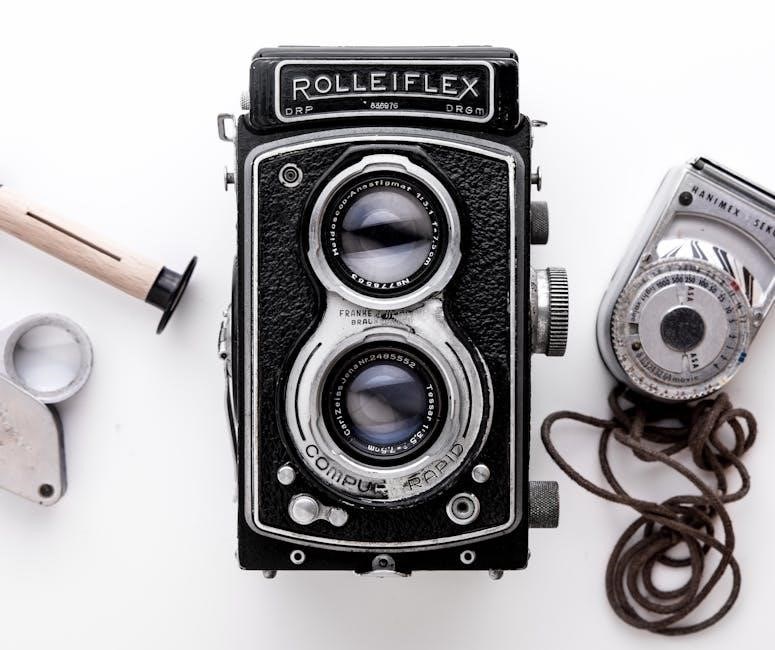
Battery and Power Management
Moultrie game cameras require 8 AA batteries for optimal performance. Use alkaline or lithium batteries for reliability. Remove batteries when not in use to preserve longevity and ensure warranty coverage.
Battery Types and Recommendations
Moultrie game cameras work best with 8 AA alkaline or lithium batteries, ensuring reliable performance in various weather conditions. Lithium batteries are recommended for colder climates due to their higher energy retention. Avoid using rechargeable batteries as they may not provide consistent power. Always install batteries correctly, following the polarity indicators in the battery compartment. Remove batteries when the camera is not in use for extended periods to prevent leakage and maintain functionality. This ensures your camera remains operational and ready for capturing wildlife images effectively.
Installing Batteries Correctly
To ensure optimal performance, install batteries in your Moultrie game camera by aligning the positive and negative terminals correctly. Open the battery compartment, typically located at the bottom or rear, and insert 8 AA alkaline or lithium batteries. Follow the polarity indicators in the compartment to avoid improper installation. Close the compartment securely to maintain a tight seal. Always use fresh batteries for reliability, especially in extreme temperatures. Proper installation prevents power issues and ensures your camera operates smoothly, capturing high-quality images without interruption.
Power Saving Tips
To maximize battery life in your Moultrie game camera, use high-quality alkaline or lithium batteries and ensure they are fresh. Avoid mixing old and new batteries. Adjust the camera’s sensitivity settings to reduce unnecessary triggers and lower image quality if high resolution is not required. Position the camera to avoid direct sunlight, which can drain power. Enable power-saving mode if available. Regularly check battery levels and replace them when needed. Consider using an external power source for long-term deployment. Properly sealing the battery compartment can also prevent energy loss. Follow these tips to extend your camera’s operational time in the field.

Setting Up the Camera
Setting up your Moultrie game camera involves inserting the SD card, setting the time and date, and selecting the operating mode. Ensure the camera is properly configured for optimal performance.
Inserting the SD Card
To insert the SD card into your Moultrie game camera, locate the SD card slot on the side or rear of the camera. Open the compartment and gently push the SD card into the slot until it clicks. Ensure the card is properly seated to avoid errors. The camera will automatically recognize the card. Always use a high-quality SD card with sufficient storage to capture images and videos effectively; Proper installation ensures data is stored securely for later review.
Setting the Time and Date
To set the time and date on your Moultrie game camera, access the setup mode via the LCD display. Use the UP and DOWN buttons to navigate to the time/date menu. Enter the current time and date using the arrow keys, then press the Enter button to save. Ensure the time zone is correctly set for your location. Accurate time and date settings are essential for organizing photos and videos chronologically. Refer to the manual for specific button functions, as they may vary slightly between camera models. Proper configuration ensures your camera captures data accurately for later review.
Selecting the Operating Mode
To select the operating mode on your Moultrie game camera, navigate to the setup menu using the mode button. Choose between Triggered Mode, which activates the camera via motion detection, or Time-Lapse Mode for periodic image capture. Some models also offer Handheld Mode for manual operation. Use the UP and DOWN buttons to scroll through options, then press Enter to confirm your selection. Ensure the mode aligns with your surveillance needs. Refer to the manual for specific instructions, as button functions may vary slightly between models. Proper mode selection is critical for optimal camera performance and desired results. Always test the mode before deploying the camera.
Configuring Camera Settings
Adjust sensitivity, detection range, and time-lapse intervals to optimize camera performance. Customize image and video quality settings for clearer captures, ensuring settings match your surveillance goals.
Adjusting Sensitivity and Detection Range
Customize your camera’s motion detection by adjusting sensitivity levels and setting the detection range. Lower sensitivity reduces false triggers, while higher settings capture more distant movements. The detection range can be set between 30 to 100 feet, depending on your surveillance needs. Use the LCD display to preview and fine-tune these settings. Proper adjustment ensures you capture wildlife activity effectively without unnecessary alerts. Always refer to the manual for specific instructions on accessing and modifying these settings for optimal performance in various environments and conditions.
Setting Up Time-Lapse Photography
Enable time-lapse mode to capture images at fixed intervals, ideal for monitoring habitat changes or animal activity over time. Using the LCD display, navigate to the camera settings and select the desired interval—options range from minutes to hours. Ensure the SD card is inserted and formatted. Once set, the camera will automatically take photos at the specified intervals. This feature is particularly useful for long-term observation without continuous monitoring. Refer to the manual for detailed steps to activate and customize time-lapse photography for your specific Moultrie game camera model.
Customizing Image and Video Quality
Moultrie game cameras allow you to customize image and video quality to suit your needs. Adjust settings like resolution, megapixel output, and video duration directly from the LCD menu. Higher settings provide sharper images but consume more storage. For optimal results, set the camera to capture HD video and high-resolution photos. Use the Up/Down buttons to navigate through options and confirm changes with the Enter button. Experiment with settings to balance quality and storage capacity, ensuring your camera captures clear, detailed images in various lighting conditions. Refer to the manual for specific instructions on accessing and modifying these settings.
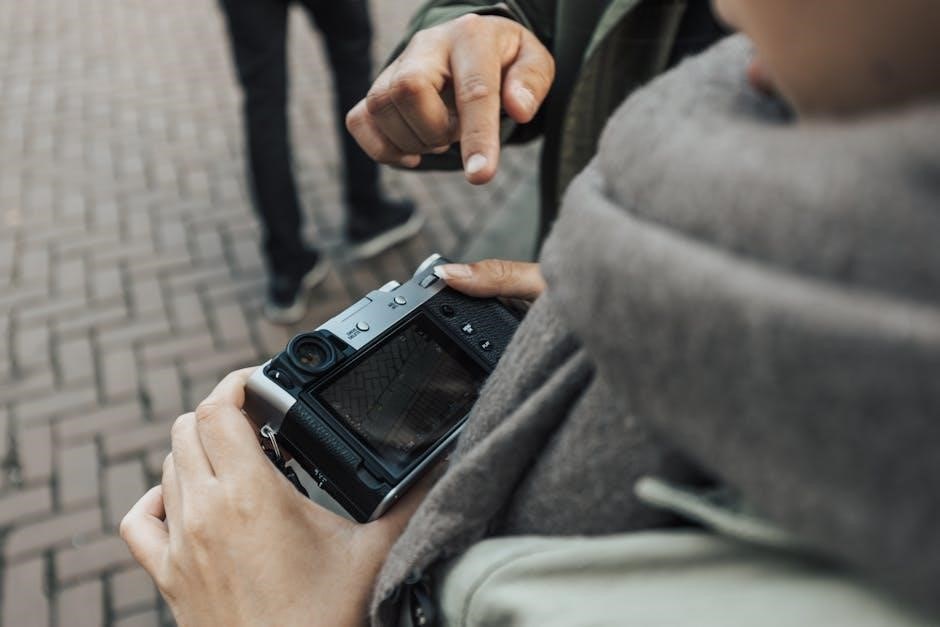
Using the Camera in the Field
Position the camera 3ft high, facing down the trail, and slightly tilted. Clear brush to ensure unobstructed views. Mount securely and adjust as needed for optimal performance.
Triggered Mode vs. Time-Lapse Mode
Triggered Mode activates the camera via motion detection, capturing images when movement is detected, ideal for monitoring wildlife activity. Time-Lapse Mode takes photos at set intervals, useful for long-term surveillance. Triggered Mode is best for detecting specific events, while Time-Lapse provides continuous monitoring. Choose Triggered for real-time alerts and Time-Lapse for observing patterns over time. Both modes offer flexibility, catering to different surveillance needs in the field. Select the mode based on your goals for efficient and targeted monitoring. This ensures optimal use of the camera’s capabilities for wildlife observation or security purposes. Adjust settings as needed for desired outcomes.
Best Practices for Placing the Camera
Position the camera 3 feet above the ground to minimize tampering and optimize detection. Face it north or south to avoid direct sunlight interference. Clear brush and debris within the detection zone for unobstructed views. Mount on a stable surface or use a tree strap for secure installation. Ensure the camera lens is clean and free from obstructions for clear images. Consider the trail or area’s high traffic zones for placing the camera. Follow these guidelines to maximize functionality and ensure reliable performance in various environmental conditions. Proper placement enhances image quality and detection accuracy, making it essential for effective monitoring. Adjustments may be needed based on specific locations and wildlife patterns.
Using the Handheld Mode
Handheld mode allows for flexible, on-the-spot photography. Slide the function switch to SETUP, then scroll to HANDHELD using the navigation buttons. This mode is ideal for capturing quick photos or videos without needing to mount the camera. Ensure the camera is properly configured in SETUP before switching modes. The LCD display will guide you through the process. Use this feature for scouting or capturing unexpected wildlife moments. Keep the camera steady for clear images. Handheld mode offers versatility, making it a valuable tool for outdoor enthusiasts and professionals alike. Proper handling ensures optimal performance and image quality. Experiment with angles for best results.

Advanced Features of Moultrie Game Cameras
Moultrie game cameras offer advanced features such as night vision, motion detection, and LCD previews. These innovations enhance wildlife monitoring and provide superior image quality effortlessly.
Understanding Night Vision and Infrared Technology
Moultrie game cameras utilize infrared (IR) technology to capture images in low-light conditions. The IR LEDs emit a non-visible light spectrum, allowing the camera to detect heat signatures without startling wildlife. This feature is essential for nighttime photography, ensuring that animals remain undisturbed while the camera operates effectively. The advanced sensors and IR technology work together to deliver clear, high-quality images even in complete darkness. This makes Moultrie cameras ideal for monitoring wildlife activity during the night, providing valuable insights for hunters and outdoor enthusiasts.
Motion Detection and Trigger Speed
Moultrie cameras feature advanced motion detection, using sensors to detect movement and trigger image capture swiftly. The trigger speed ensures quick response to animal activity, minimizing the chance of missing important moments. Adjustable sensitivity settings allow customization based on the environment, reducing false triggers. This technology is crucial for capturing wildlife effectively, ensuring clear and timely images. The combination of precise sensors and fast trigger speeds makes Moultrie cameras highly efficient for monitoring and documenting wildlife activity accurately and reliably.
Using the LCD Display for Preview
The LCD display on Moultrie game cameras allows users to preview settings, review captured images, and navigate menu options. It provides a clear visual interface for adjusting camera configurations, ensuring proper setup. The display also shows the current time, helpful when in Setup mode. This feature is essential for verifying camera functionality and ensuring images are captured as intended. The LCD display enhances user experience by offering real-time feedback and simplifying the adjustment process, making it easier to achieve optimal camera performance in the field.

Troubleshooting Common Issues
Moultrie game cameras may face issues like power failures or sensor malfunctions. Refer to the manual for diagnostic tests to identify and resolve problems effectively.
Camera Not Turning On
If your Moultrie game camera fails to turn on, check the battery compartment for proper installation. Ensure all batteries are correctly placed and not expired. Verify that the power button is functioning and that no debris obstructs it. If using an SD card, remove it and test the camera without it. Also, inspect the battery terminals for corrosion. If issues persist, consult the user manual or contact Moultrie support for further assistance.
SD Card Errors and Solutions
SD card errors can prevent your Moultrie game camera from recording images. Ensure the card is properly formatted and compatible with the camera. Use a high-quality SD card with sufficient capacity. If the camera fails to recognize the card, try reformatting it using the camera’s settings or a PC. Avoid using cards formatted for other devices. If issues persist, test with a different SD card to rule out defects. Always follow the manual’s guidelines for SD card specifications to ensure optimal performance and avoid data loss.
Adjusting to Avoid False Triggers
False triggers can be minimized by adjusting your Moultrie game camera’s sensitivity settings. Lowering the sensitivity reduces detections from small animals or vegetation. Position the camera to avoid direct sunlight and heavy brush areas. Ensure the camera is level and securely mounted to prevent movement. Regularly clean the sensor and lens to maintain accuracy. Test the camera’s trigger zone by walking in front of it to observe detection patterns. Adjust the angle or location if excessive false triggers occur. Refer to the manual for specific sensitivity adjustment instructions to optimize performance for your specific environment.
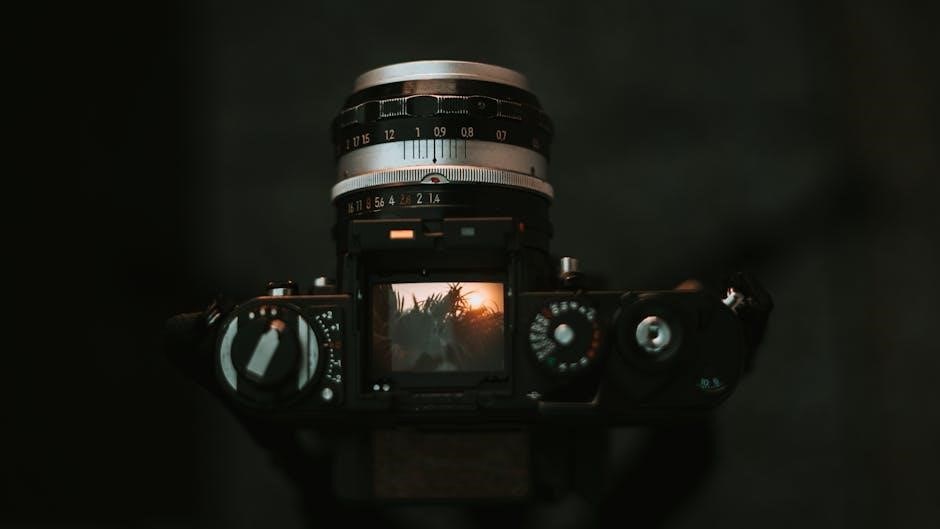
Maintenance and Storage
Regularly clean the camera lens and sensors to ensure optimal performance. Store the camera in a dry, cool place, removing batteries when not in use.
Cleaning the Camera Lens and Sensors
Regular cleaning of the camera lens and sensors is essential for maintaining image clarity and functionality. Use a soft, dry cloth to gently wipe the lens, avoiding harsh chemicals or abrasive materials. For stubborn smudges, lightly dampen the cloth with distilled water, but ensure it is completely dry before wiping. Clean the sensors similarly to prevent dust interference. Avoid touching the lens surface to prevent smudging. Regular maintenance ensures optimal performance and prevents issues like blurry images or false triggers. Store cleaning supplies near the camera for quick access and routine care.
Storing the Camera When Not in Use
For long-term storage, remove batteries and store the camera in a cool, dry place away from direct sunlight. Use the original packaging or a protective case to prevent damage. Avoid extreme temperatures and humidity, which can harm electronic components. Clean the lens and sensors before storage to ensure clarity upon reuse. Store the SD card separately in a secure location. Check the camera periodically during storage to ensure functionality. Proper storage extends the lifespan and maintains performance, ensuring your Moultrie game camera remains ready for future use. Always follow the manufacturer’s guidelines for storage and maintenance.
Accessories for Enhanced Functionality
Moultrie game cameras can be enhanced with mounts, straps, and solar power options for improved positioning, security, and extended battery life, ensuring optimal performance in the field.
Recommended Mounts and Brackets
Moultrie game cameras offer a variety of mounting solutions to ensure secure and optimal placement. Tree straps and trail camera brackets are popular choices, providing easy installation and adjustability. These mounts allow the camera to be positioned at the recommended height of 3 feet, ensuring clear visibility and minimizing false triggers. For added security, lock boxes are available to protect the camera from theft or tampering. Additionally, tripod adapters provide flexibility for temporary setups. These accessories enhance the camera’s functionality and reliability, making them essential for both novice and experienced users in the field.
Using Solar Power Options
Moultrie game cameras can be paired with solar power accessories for continuous operation in the field. The Moultrie Deluxe Solar Panel is a popular choice, designed to charge camera batteries using sunlight. This eco-friendly solution reduces the need for frequent battery replacements, especially in remote locations. Simply attach the solar panel to a tree or sturdy object near the camera, ensuring direct sunlight exposure. The panel charges a battery pack, which powers the camera consistently. This setup is ideal for long-term monitoring, offering reliability and convenience while minimizing maintenance efforts. It’s a sustainable way to keep your camera operational year-round.
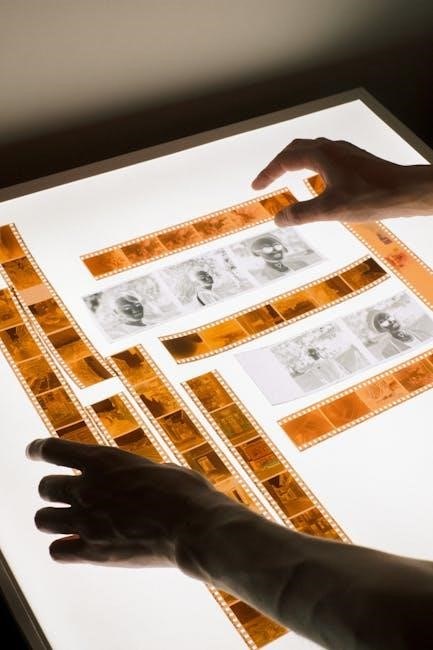
Warranty and Support Information
Moultrie offers a 2-year warranty upon registration. Visit moultriefeeders.com/warranty to activate. Contact customer support for assistance with any issues or inquiries about your game camera.
Understanding the Moultrie Warranty Policy
Moultrie game cameras come with a 2-year limited warranty, ensuring protection against defects in materials and workmanship. Registration is required within 30 days of purchase at moultriefeeders.com/warranty. The warranty covers repairs or replacements for defective parts. However, it does not apply to damages caused by misuse, neglect, or normal wear and tear. Proper maintenance, as outlined in the manual, is essential to uphold warranty validity. For details, review the warranty section in your camera’s instruction manual or contact Moultrie support directly.
Contacting Customer Support
For assistance with your Moultrie game camera, visit the official website or contact customer support directly. Support is available via phone, email, or live chat. Reach them at support@moultriefeeders.com or call (800) 653-3334. Their team is available Monday to Friday, 8 AM to 5 PM CT. For faster service, have your camera model and serial number ready. You can also find troubleshooting guides and FAQs on their website. Moultrie’s dedicated support ensures quick resolution for any issues, helping you maximize your camera’s performance and enjoy a seamless user experience.
